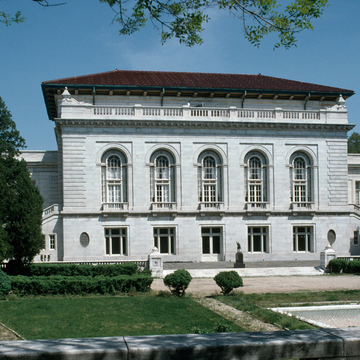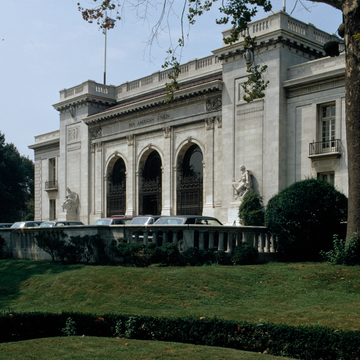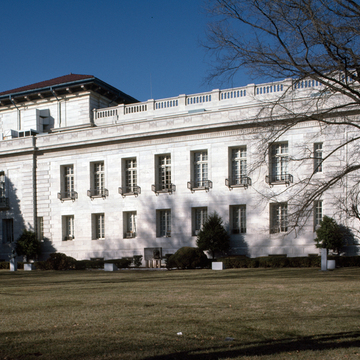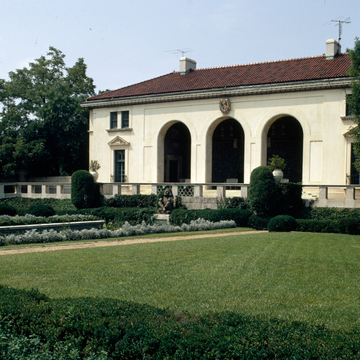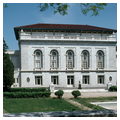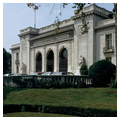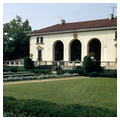You are here
Organization of American States Building
The most exotic of all the monumental buildings in Washington's central core is Albert Kelsey and Paul Philippe Cret's Organization of American States Building. The architects drew from traditions of both North and South America in providing a headquarters for the organization, which promotes cooperation among Central and South American countries and the United States.
The triple-arched entrance of the principal facade on 17th Street forms an arcade flanked by huge pylons and two-story pavilions. One of two sculptural groups, each before a pylon, illustrates North America with a female figure and child. It was executed by Gutzon Borglum. On the south, a similar group, by Isidor Konti, symbolizes South America. Above each statue, bas-relief panels illustrate, respectively, George Washington, Simón
The interior similarly incorporates cultural details drawn from Aztec, Incan, Mayan, and European art, all set in the context of spacious halls, patios, exhibition rooms, and the Hall of the Americas. The luxuriousness of the decorative details increases on approaching the interior tropical courtyard.
The more distinctively South American Annex, also designed by Kelsey and Cret, resembles a Spanish villa. Decorative elements drawn directly from Mexican models are seen in the tilework of the pool that is in the garden connecting the main building and the annex. Terracotta is also seen in large urns, the walls of the loggia, and in the building's polychromatic cornice and shield. The marble-clad administration building, located between 18th and 19th streets, was the last structure completed in this group. Constructed in 1948 after designs by Harbeson, Hough, Livingston, and Larson, it has a slightly bowed wall to emphasize the entrance and represents the firm's long association with classicism.
Writing Credits
If SAH Archipedia has been useful to you, please consider supporting it.
SAH Archipedia tells the story of the United States through its buildings, landscapes, and cities. This freely available resource empowers the public with authoritative knowledge that deepens their understanding and appreciation of the built environment. But the Society of Architectural Historians, which created SAH Archipedia with University of Virginia Press, needs your support to maintain the high-caliber research, writing, photography, cartography, editing, design, and programming that make SAH Archipedia a trusted online resource available to all who value the history of place, heritage tourism, and learning.














